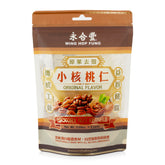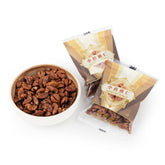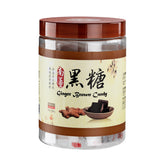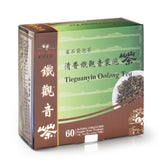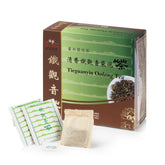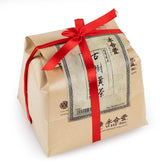Protect your lungs
Protect your lungs!

Autumn is considered a dry season in traditional Chinese medicine. Many people who smoke, who are overweight, the elderly and very young are especially susceptible to lung infections, coughing and shortness of breath, and the ongoing fires raging throughout California due to global warming. Now is the time to protect vital energy and immunity with herbs and foods that heal our lungs.
Breathing is more than inhale and exhale: It requires energy to breathe. Without adequate qi energy our body, especially our heart lacks oxygen. We develop chest pains and eventually asthma. Wing Hop Fung offers many natural remedies that soothe and rebuild lung strength.
Energy/Immunity
American ginseng is white, cooling, moistening, and energizing for breathing and immunity. It is yin, which means it enhances necessary fluids in the lungs, stomach, and kidneys, it protects against tissue stress and dryness. It is rejuvenating for complexion and corrects chronic thirst and improves diabetes. It is the premium ginseng for Summer and Autumn, for persons who smoke or to combat fatigue and depression from environmental smoke and poisons. It can be brewed as tea, added to soups, or soaked and enjoyed in recipes calling for root vegetables. It combines well with goji berries, tremella, and vegetables or fish dishes.
This dried sweet pod is more flavorful than sugar and a lot healthier. It can be added to teas or recipes in place of sugar and is safe for diabetes. Crack the pod and simmer it for its cooling, healing effects. It corrects dry cough and shortness of breath due to smoke inhalation. It zero calories, zero carbohydrates, zero sodium, and zero fat. This makes it a popular sweetener alternative for manufacturers who make low-calorie products.
Soups
Soups are another good way to add revitalizing fluid to your diet. They are more easily absorbed and strengthening for weak, tired, stressed people. Here are a few ideas:
Ganoderma lucidum, white fungus soup
Ganoderma (lingzhi, reishi) mushroom is full of top quality nutrition, a qi tonic super-food used for health and longevity. It is simmered as a tea, water extract or added to soups. Ganoderma lucidum is one of the primary herbs of choice in any immune deficiency disease. It possesses a broad spectrum of immuno-stimulating activities, as well as anti-inflammatory and antiallergenic properties. Add it to any healing soup. Avoid use with coffee or tea or other foods that may speed its elimination from the body. It is a precious healing tool.
This recipe combines Ganoderma with tremella, a moistening rejuvenating white fungi.
Ingredients:
9 grams of Ganoderma lucidum, 6 grams of white fungus, 15 grams of rock sugar. Simmer for 2 to 3 hours on low heat, until the white fungus becomes a thick juice. Strain out the residue of Ganoderma lucidum.
Dosage: 3 times daily to treat cough, restlessness, insomnia, forgetfulness, etc.
Ganoderma, lotus seed chicken soup
This soups slightly warming and very nourishing from the addition of chicken. However, it can be cooked as a vegetarian dish. The lotus seeds and tangerine peel strengthen digestion by reducing bloating.
Ingredients:
6 grams of Ganoderma lucidum, 50 grams of lotus seeds, a piece of tangerine peel (chen pi), one chicken cut in pieces. Add enough water to make soup.
Simmer all the ingredients for 2 – 3 hours until the lotus seeds are soft.
Functions: This is the best natural Ganoderma lucidum soup for invigorating the spleen and improving appetite, nourishing the body, for after illness, physical weakness, postpartum fatigue, weakness after surgery, weak spleen and stomach, insufficient blood circulation, dizziness. Anyone can often drink this soup.
Tremella, pear, red dates, goji dessert soup
This tasty soup is used to moisten, cleanse, rejuvenate lungs.
Ingredients: 1 tremella white fungus, 8 red dates, 20 wolfberries (goji berries) 1 pear
Soak one piece of tremella white fungus overnight to make it softer, remove the dark yellow core on the back and cut it into pieces. In a pot add the tremella, a handful each of red jujube dates and goji berries (wolfberries) and simmer for 45 minutes until the tremella is soft and juicy. Add enough water for soup. Cut a pear into slices and simmer for 5 more minutes.
Sweet Soup 清補涼 (Qing Bu Liang Herbal Soup)
cooling, cleansing, tones digestion, improves breathing
This classical tong sui (sweet) dessert soup (mandarin: Qing Bu Liang / cantonese: Ching Bo Leung) is a traditional mixture of herbs cooked in a soup and enjoyed throughout China and Vietnam. Although the contents can vary depending on the method of preparation, the mixture generally consists of seven standard herbs: Dioscorea, lily bulb, dried polygonatum, fox nut, pearl barley, dried lotus seed, and dried longan. There are variations of this recipe, made with pork or chicken. It can be served hot adding pungent toppings like scallions, pickled pepper, or radish. More often it is served cold as a sweet dessert either plain or by adding fruit such as apple or pear or lo han quo monk fruit during cooking. A stock can be added and simmered over a low heat for two to three hours.
This soup is popular all year round and is believed to detoxify the body, nourish the kidneys and lungs, and build up the blood. Individually, the ingredients have a wide array of indications. For example, lily bulb is used for mild cardiac insufficiency, arrhythmias, urinary tract infections, and kidney stones; pearl barley (coicis seed) is used for bronchitis. Round lotus seeds and lily bulbs are a very popular and common in South China and are classified in TCM as astringents, sweet and neutral, and good for the spleen, kidney, and heart.
Solomon Seal is a multipurpose herb that grows in our woodlands. All parts, and especially the berries, are poisonous except for the roots. We simmer Solomon seal root to drink as a tea or to apply to skin and scalp. It has astringent properties and has been used for relief from injuries, gastrointestinal issues, women health and as a cough medicine. If someone is suffering from dry cough, the tea provides immediate relief by soothing the throat. Applied topically Solomon seal tea can enhance skin’s youthful luster and remove redness and itching.
Longan fruit is called flesh of dragon’s eye in popular Chinese and is sold on the streets in China as a sweet snack. It is the fruit of an evergreen that flowers from March to April and the fruit season is from July to September. According to modern research, fresh longan has very high nutritional value containing carbohydrate, proteins, amino acids, vitamins B, C, calcium, phosphorus, iron, tartaric acid, adenine, etc. Modern pharmacological research shows that longan’s Vitamin P is especially helpful to the elderly since it is able to protect blood vessels, prevents hardening of the arteries and confirms a claim made by China’s first pharmacy monograph Shen Nong’s Herbal Classic that longan can help weight loss and keep people young.
This soup is more than a tangy or sweet dessert, it is a health and beauty tonic that you can make your own. You might get creative and add the cooked Sweet Soup ingredients to cold coconut milk and add sliced fresh papaya, pear, pineapple or your choice. Good year round to satisfy a healthy sweet tooth. For added quality nutrition and taste you might add canned Abalone.
Ingredients:
淮山 Dioscoreae root
洋意米Barley/semen coicis
生芡实 Euryale Seed, fox nuts
白莲子Lotus seed
百合 Lilii bulb
玉竹 Solomon seal rhizome
元肉Dried Longan fruit
Simmer the ingredients, if possible in a non-metal or ceramic coated pot until all seeds and dioscorea yam are cooked and tender. Add meat or fruit is you like.
Lian Hua Qing Wen Capsule is recommended for treating influenza “syndrome of heat toxin attacking lung.” The symptoms are mild fever or high fever, chills, muscle aches, nasal congestion, runny nose, cough, headache, dry throat, red tongue, or with a yellow or greasy tongue coating etc.
Ingredients:
Forsythia bark, honeysuckle flower, ephedra, fried bitter almonds, gypsum, Radix Isatidis, Mianma Guanzhong, Houttuynia cordata, patchouli, rhubarb, Rhodiola rosea, menthol, licorice and minimal starch.
Forsythia, honeysuckle, isatis are anti-inflammatory, antibiotic herbs. Processed gypsum powder is a strong anti-inflammatory. Mianma Guanzhong (Dryopteris root) is a detoxifying, anti-inflammatory vine. Ephedra, ma huang, often used for fighting epidemic disease, is detoxifying. All the herbs have toxin-clearing, anti-inflammatory effects. Rhubarb reduces fever and increases cleansing.
Forsythia, honeysuckle flower, and isatis root are bitter tasting, cooling broad-spectrum antibiotic herbs that treat skin, lung, and large intestine infections and breast abscess. Isatis also purifies and protects the liver. The cooling detoxifying actions of the herbs and processed gypsum, a mineral, is balanced with the diaphoretic action of ephedra. Ephedra is not Mormon Tea, a popular name, but is much stronger. It is not sold separately but is available in herbal formulas to drive out “evil wind” a category of illness that encompasses aches, fever, and epidemic germs that can affect our immune defense. Ephedra drives out colds and chills by increasing sweating. It is balanced with the laxative rhubarb. Do you get the picture? The invader is exploded out of the body with sweating and laxative action, while antibiotic herbs stop the infection in its tracks.
The capsule contains yellow/brownish herbal granules and powder, with a “slightly fragrant aroma and slightly bitter taste.” Oral Dosage: 4 capsules at a time, 3 times a day. Each capsule contains 0.35 grams.
GXW Qingfei Paidu Tang (15 Sachets)
This formula is recommended to "cleanse lungs and detoxify"
Ingredients: Sugar, Raw gypsum, Bupleurum, Poria cocos, Yam, Almond, Cinnamon, Alisma, Polyporus umbellata, Atractylodes macrocephala, Pinellia ternata, Ginger, Aster, Flos farfarae, Rhizoma belamcandae, Patchouli, Scutellaria baicalensis, Asarum, Fructus Aurantii, Tangerin peel.
配料:白砂糖,生石膏,柴胡, 茯苓,山药,杏仁,桂枝,泽泻,猪苓,白术,姜半夏,生姜,紫菀,冬花,射干,藿香,黄苓,细幸,枳实,陈皮。
Edible method: [Simmer for 20 minutes in water.] Drink a cup 3-4 times daily, use 1-2 bags (sachets) each time, take with boiled water.
食用方法: 开水冲饮,1次1-2袋,1日3-4次。
Storage method: Store in a cool and dry place.
储藏方法:请置于阴凉干燥处。

